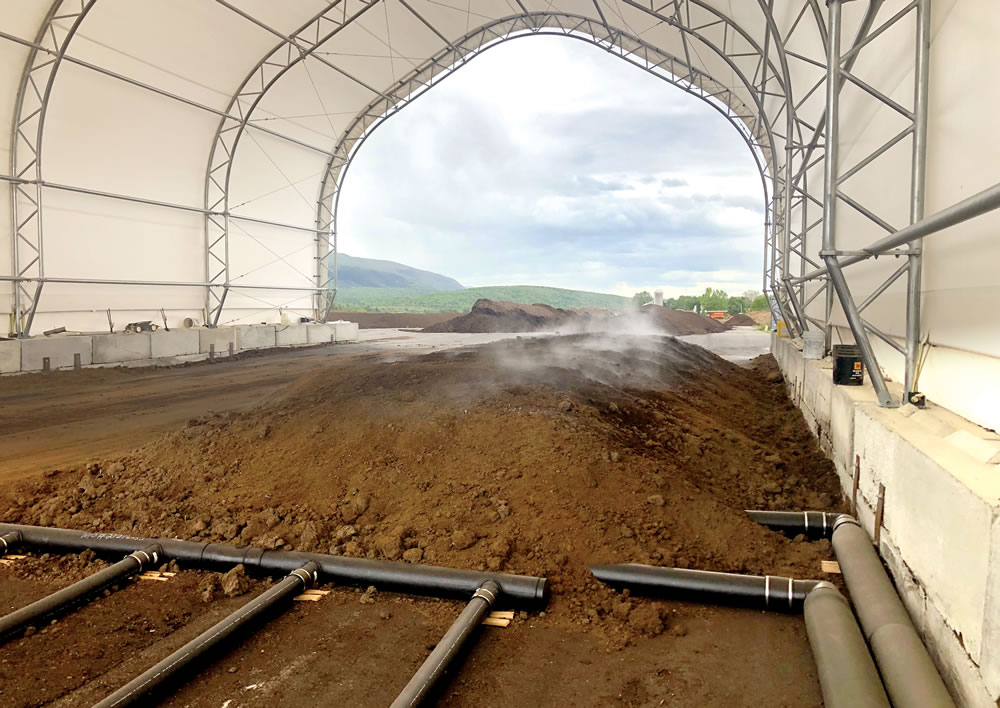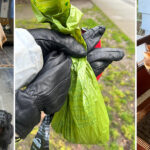Two companies are demonstrating the integration of composting and filtration technologies for the Vermont Phosphorus Innovation Challenge.
Brian Jerose
BioCycle September/October 2019
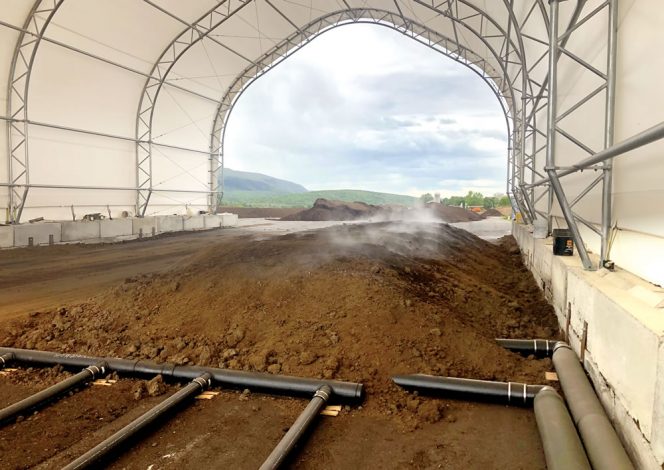
After 15 days of composting under negative aeration, separated dairy manure solids were put in a drying zone (to release steam and drive off moisture) under positive aeration with heated air. Photo courtesy of Agrilab Technologies, Inc.
Phosphorus-laden runoff has impaired surface waters in Vermont, including tributaries and portions of Lake Champlain. In April 2018, the state launched the Vermont Phosphorus Innovation Challenge (VPIC) with a call for proposals, seeking proactive solutions to the phosphorus imbalance and water quality challenges. “The VPIC brings together the public and private sector, combines science, technology and innovation, and creates a new model around phosphorus by promoting economic growth, environmental sustainability, and societal benefits,” said Vermont Governor Phil Scott at the time of the launch.
A total of 27 groups submitted proposals, 12 were interviewed and six finalists were selected in October 2018 and given funding (total of $250,000 split among the six projects) to enable effective prototyping and business case development, which varies for each proposal. The final report for Stage II is due September 30, which also includes proposals for Stage III funding. Upon Stage II completion, Stage III will involve full-scale implementation of one or more of the stage two projects. Stage three selections will focus primarily on estimated cost per pound of phosphorus (P) mitigated, and then consider ways to repurpose P as a part of a value-added product, creating economic development opportunities.
Two of the six grant awardees are Agrilab Technologies, Inc. and Digested Organics LLC. Agrilab Technologies (AGT), which received $50,000 in funding, is developing a combination of existing P recovery technologies, composting and drying equipment, and associated best management practices, to demonstrate the technical feasibility of stabilizing and adding value to recovered “P-cake” and similar materials. Digested Organics (DO), which received $45,000, is developing an ultrafiltration system on a Vermont dairy farm to remove most of the present P, suspended solids and pathogens in liquid manure, producing a transparent liquid for field application (i.e. filtrate or “tea-water”) and a readily transportable concentrated fertilizer (i.e. concentrate).
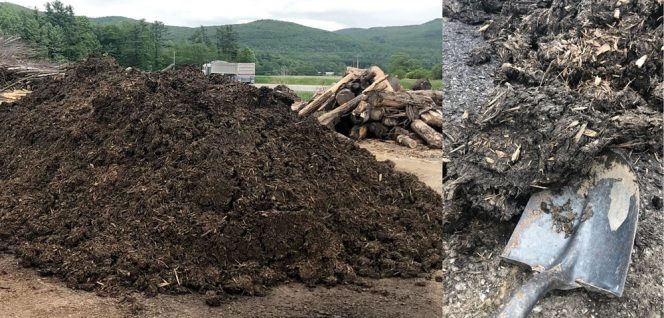
Dissolved Air Flotation (DAF) sludge (left) was mixed with sawdust, ground wood chips and bedded horse manure (right) then placed in a negatively aerated composting zone. Photos courtesy of Agrilab Technologies, Inc.
AGT and DO have prepared Stage II Progress Reports in July 2019, as required by the grant. Agrilab Technologies Inc. (AGT) has completed a portion of the field prototyping work on product and process trials intended to add value to concentrated P residuals, including separated dairy manure solids, dissolved air flotation solids, and the DO concentrate. Using compost aeration and heat recovery (CAHR), heated aeration drying practices and other best management practices, AGT is working with project partners to mix new blends at the Foster Brother Farms composting enterprise, VT Natural Ag Products (VNAP) in Middlebury. Economic tracking is providing inputs to the business model that is being developed for expanded P processing and composting.
DO has demonstrated use of a stainless steel ultrafiltration system to concentrate greater than 90 percent of the P in dairy manure (raw or digested) into about 20 percent of its original volume. This concentrate can then be cost-effectively hauled to a centralized processing facility, which in the case of the VPIC work, is the VNAP composting operation. The filtrate that passes through the wall of the ultrafiltration tube contains very low levels of P and no pathogens. It remains on the farm for use in land application.
Field Prototyping
In June and July 2019, tasks at VNAP included monitoring temperatures and aeration flow rates, product blending and prototyping composting and drying steps. Prototyping work is intended to capture both the moisture, nutrient and physical characteristic changes during the processing steps while documenting the unit economics of potential marketable products. The costs for labor, material inputs and site infrastructure overhead are being tracked. These figures will be used against selected price points determined through on-going market research.
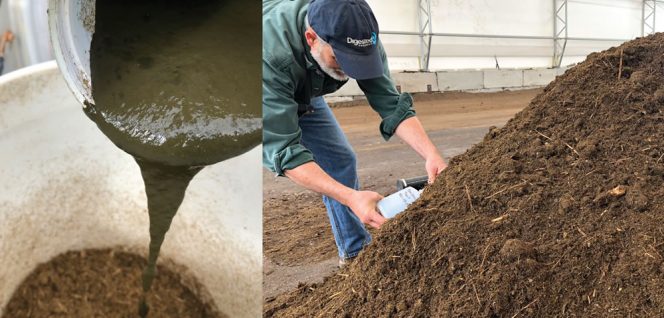
To test production of a P-fortified compost, concentrate from Digested Organics’ ultrafiltration equipment (left) was added as a feedstock prior to active composting (right). Photos courtesy of Agrilab Technologies, Inc.
Multiple aeration zones are used for active composting and material drying. The aeration piping and equipment layouts are intended to replicate practices that are either replicable on many dairy farms or would only be suitable for a centralized composting/material processing facility. Product characteristics are being tracked through the process. Sample analyses are being returned from the laboratory and reviewed for the nutrient, moisture and other parameter differences between batches. These analytical reports are now available to accompany physical product samples when conducting market research with potential buyers and product end-users.
Next steps include continued field work for prototyping product formulation and optimal handling practices, equipment and technologies. At least one more batch of material will be actively composted and one dried by the heated forced aeration. Market research is still being conducted for projecting product price points and market sizing, and timing, including geographic considerations.
To date, this work presents promising data on the operation of the DO ultrafilter and composting systems, as well as nutrient analyses on the product stream and the enhanced compost products being produced. Since DO’s ultrafiltration process does not use any synthetic polymers, the material can be used in organic agriculture and hence provides a higher market value.
Brian Jerose is President/Cofounder of Agrilab Technologies Inc. (AGT) based in Enosburg Falls, Vermont. AGT provides services and equipment including compost aeration and heat recovery (CAHR) systems for farms and commercial/municipal composters. Jerose, along with Robert Levine of Digested Organics, are presenting the findings to date at BioCycle REFOR19 on Wednesday, October 30.


